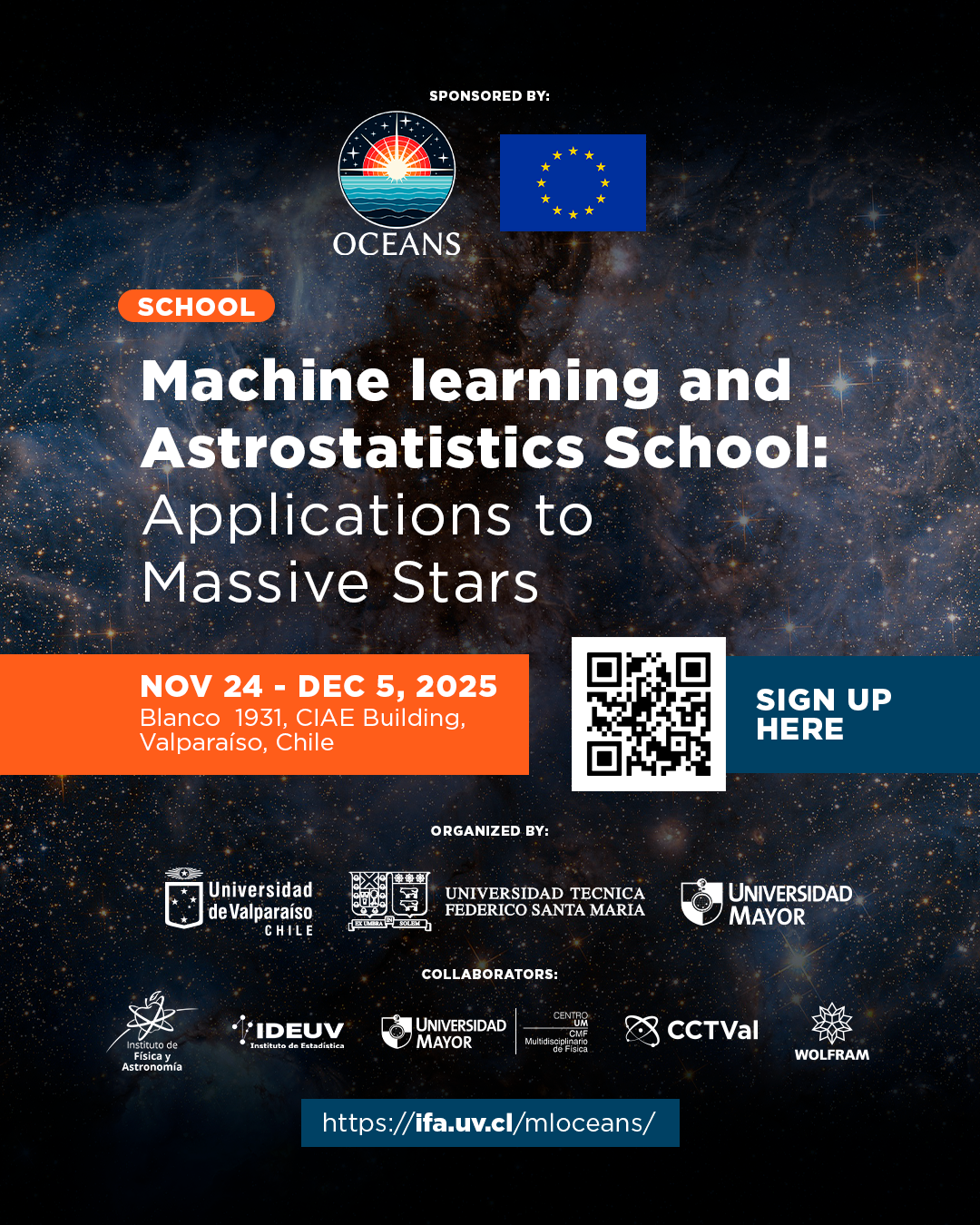


Deadline for registration: 15 August 2025 !!

Leticia V. Ferrero from OAC-UNC participated in the ESO workshop The role of accretion and ejection variability in the evolution of young stars and their disks (19 - 22 May 2025) at the ESO Headquarters in Garching, Germany.
Information material on OCEANS and on the scientific contribution of ASU team members can be found on our Information page.
Open Doors at ASU (16 - 17 May 2025). See our Activities for more information.
Gabriel Ferrero from UNLP visits IAC (27 April - 1 July 2025)
Gemma Gonzales i Tora from UHEI visits UV (3 March - 2 April 2025)
Elisa Schösser from UHEI visits UTFSM (3 March - 2 April 2025)
Roel Lefever from UHEI visits UTFSM (3 March - 2 April 2025)
Leticia Ferrero from UNC-OAC visits ASU (23 February - 16 May 2025)
Gonzalo Holgado from IAC visits UNLP (2 February - 20 March 2025)
Anahí Granada from UNRN visits IAC (20 January - 21 February 2025)